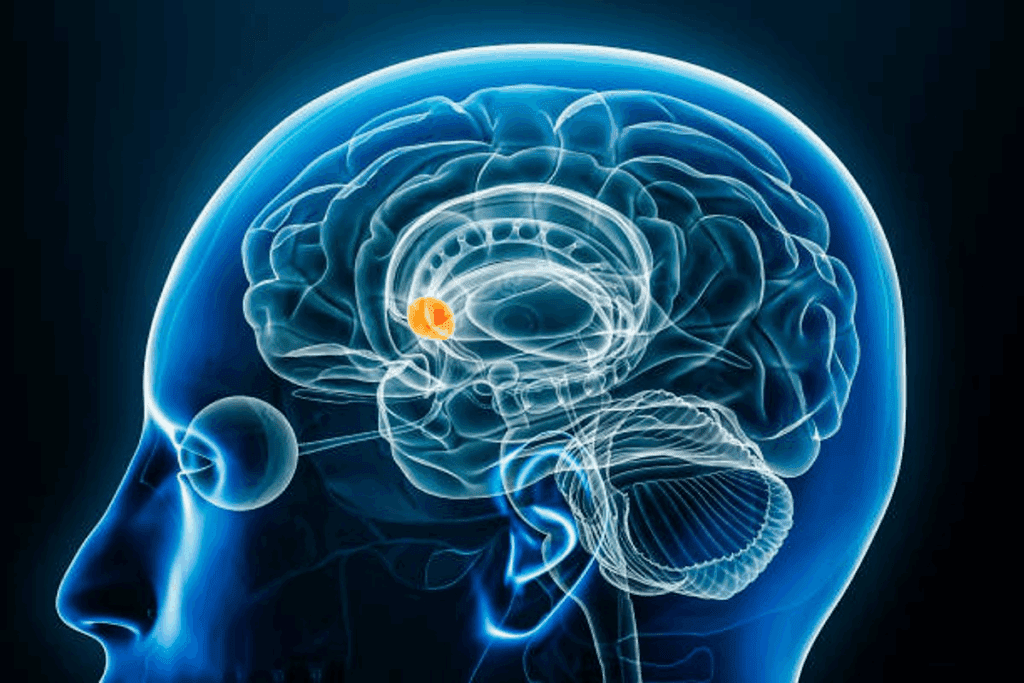Last Updated on November 26, 2025 by Bilal Hasdemir

Treating intracranial aneurysms needs a precise and gentle approach. Neuro embolization is key, letting doctors place embolization coils to stop bleeding and prevent rupture.
Penumbra’s coil devices are made for a variety of aneurysm sizes. They ensure the blood vessel is blocked well. This technology helps doctors give patients the best care for tough aneurysms.
Key Takeaways
- Neuro embolization is a minimally invasive technique for treating intracranial aneurysms.
- Penumbra’s coil devices offer dense and reliable vessel occlusion for a wide range of aneurysm sizes.
- Advanced coil technologies improve treatment outcomes for complex aneurysms.
- Liv Hospital utilizes state-of-the-art coil technologies for optimal patient care.
- Innovative coil devices enable healthcare providers to offer personalized treatment options.
Understanding Cerebral Aneurysms and Their Risks
Cerebral aneurysms are a serious brain condition where a blood vessel balloons. They can happen in any brain blood vessel but often appear at big artery branch points. Knowing about cerebral aneurysms helps us understand the dangers they pose.
What Are Cerebral Aneurysms?
Cerebral aneurysms are weak spots in blood vessel walls that can grow over time. They can be saccular (berry-shaped), fusiform (spindle-shaped), or dissecting (caused by a tear). Most are saccular aneurysms, found at major artery junctions at the brain’s base.
Risk Factors and Prevalence
Several things can raise your risk of getting cerebral aneurysms. These include genetic predisposition, hypertension, smoking, and family history of aneurysms or certain genetic disorders. About 3-5% of adults have cerebral aneurysms. Many don’t show symptoms but some may leak or rupture, causing problems.
| Risk Factor | Description | Impact on Aneurysm Risk |
| Genetic Predisposition | Family history of aneurysms or certain genetic disorders | Increased risk due to hereditary factors |
| Hypertension | High blood pressure | Increases wall stress on blood vessels |
| Smoking | Cigarette smoking | Damages blood vessel walls and increases rupture risk |
Consequences of Aneurysm Rupture
When a cerebral aneurysm ruptures, it can cause a serious stroke called subarachnoid hemorrhage (SAH). SAH is very dangerous and can be deadly. Quick medical care is key to managing the situation and preventing more harm. Embolization coils and embolic coils are important in treating aneurysms, providing a less invasive option than surgery.
It’s important to understand the risks of cerebral aneurysms and the benefits of treatments like embolization coils. This knowledge helps improve patient care. We’ll look at more about neuro embolization and coil types in the next sections.
The Evolution of Endovascular Aneurysm Treatment
The way we treat cerebral aneurysms has changed a lot. Now, we focus on less invasive methods. This change comes from new tech and better understanding of aneurysms.
Historical Development of Coiling Techniques
Endovascular treatment of aneurysms started many years ago. At first, it was just simple coil embolization. But now, we use more advanced methods like aneurysmal coil packing.
This method fills the aneurysm sac tightly. It helps prevent rupture and aids in healing.
Coil technology has improved a lot. We now have platinum coils and large coil packs for aneurysms. These updates make treatments safer and more effective.
Technological Advancements in Embolization Devices
New tech has been key in improving endovascular aneurysm treatment. Better materials have led to stronger, more flexible coils. Also, new imaging tools help us see aneurysms better and treat them more accurately.
Bioactive coils are another big step forward. They help the aneurysm heal and lower the chance of it coming back.
Current Standards of Practice
Today, endovascular aneurysm treatment is a main choice for many aneurysms. The right coil and method depend on the aneurysm’s size, shape, and where it is.
We keep getting better at treating aneurysms. Using large coil packs for aneurysms and complex coiling helps us tackle harder cases.
Neuro Embolization: Principles and Procedural Overview
Neuro embolization has changed how we treat cerebral aneurysms. It’s a new way that’s less invasive than old surgeries. This method uses small coils to fill the aneurysm, stopping it from getting bigger or bursting.
Mechanism of Action in Aneurysm Occlusion
Neuro embolization works by putting coils into the aneurysm. These coils cause blood clots, blocking the aneurysm. The coils are made of platinum, which is safe and shows up well on scans.
The coils help stop the aneurysm from bursting by cutting it off from blood flow. How well it works depends on the accuracy of the scans guiding the coils.
Step-by-Step Procedure Walkthrough
The procedure is done while the patient is asleep or very relaxed. Here’s what happens:
- First, a catheter is put in through the femoral artery, guided by imaging.
- Then, a smaller catheter is moved through the brain’s blood vessels to the aneurysm.
- Next, coils are pushed through the smaller catheter into the aneurysm.
- The coils are chosen and sized to fit the aneurysm perfectly, ensuring they pack well.
- Throughout, imaging helps watch the coils go in and see if the aneurysm is blocked.
| Step | Description | Imaging Guidance |
| 1 | Femoral artery access | Fluoroscopy |
| 2 | Microcatheter navigation | Roadmapping |
| 3 | Coil deployment | Fluoroscopy, Angiography |
Imaging Guidance and Navigation Techniques
Good imaging is key for neuro embolization to work. Fluoroscopy, roadmapping, and angiography show what’s happening in real time. This helps place the coils exactly right in the aneurysm.
Using the latest imaging tech makes the procedure safer and more effective. It leads to better results and fewer problems.
Platinum-Based Embolization Coils: Foundation of Treatment
In the world of neuro embolization, platinum-based coils are key in treating cerebral aneurysms. They are the mainstay of endovascular aneurysm treatment. This is because of their unique properties and benefits.
Properties and Benefits
Platinum coils are prized for their radiopacity. This means they are very visible during and after treatment. This is key for placing them correctly and checking if they work well.
Platinum also has other big advantages. It’s safe for the body, lowering the chance of bad reactions. It’s flexible and can be shaped in many ways. This makes it perfect for reaching and treating complex blood vessels.
Standard Configurations and Clinical Outcomes
Platinum coils come in many shapes to fit different aneurysms. The main types are:
- Helical coils for framing and filling aneurysms
- Complex coils for achieving dense packing
- Soft coils for finishing and minimizing residual filling
Studies have shown great results with platinum coils. They often completely close off aneurysms and rarely come back. A study found that platinum coils worked well in most cases, achieving complete occlusion.
| Coil Type | Complete Occlusion Rate | Recurrence Rate |
| Platinum Coils | 85% | 5% |
| Other Materials | 70% | 10% |
Safety Profile
Platinum coils are safe, with few complications. Their biocompatibility means they’re unlikely to cause allergic reactions. Also, they are carefully placed to avoid rupturing the aneurysm during treatment.
In conclusion, platinum-based embolization coils are essential in treating cerebral aneurysms. They offer visibility, flexibility, and safety. Their different shapes allow for personalized treatments. And, they have shown to be very effective with low rates of coming back.
Penumbra Smart Coil System: Advanced Stretch-Resistant Technology
The Penumbra Smart Coil System uses advanced technology to treat aneurysms better. It has changed neuro embolization by giving a solid and effective way to handle complex aneurysms.
Design Features and Mechanical Properties
The Penumbra Smart Coil System has key design features that make it work well. Its stretch-resistant technology keeps the coils strong during use, lowering the chance of them stretching or kinking. This is very helpful for complex aneurysms where keeping the coils stable is key.
The system’s mechanical properties are made to pack well and stay stable in the aneurysm. This is done with complex and helical shapes that fit the aneurysm’s shape, making sure it’s secure.
Complex and Helical Shape Advantages
The Penumbra Smart Coil System’s complex and helical shapes have big benefits. These shapes help fill the aneurysm better, cutting down the chance of coil compaction and helping it stay closed over time. The complex shapes fit the aneurysm’s shape well, and the helical shapes add stability and support.
Size Range Applications (2-20mm Aneurysms)
The Penumbra Smart Coil System works for aneurysms from 2 to 20 mm. This wide range makes it perfect for many aneurysm types, from small to big. Its adaptability means doctors can treat many aneurysms with just one system.
Clinical Case Examples and Outcomes
Studies show the Penumbra Smart Coil System is great for complex aneurysms. For example, a study on wide-neck aneurysms showed high success rates and low recurrence. These results show the system’s ability to improve patient care and reduce the need for more treatments.
Our experience with the Penumbra Smart Coil System shows its advanced technology and design are key to its success. It offers a reliable and effective way to manage complex aneurysms, improving patient care.
POD400 and Large Aneurysmal Coil Packs
POD400 and large aneurysmal coil packs are key in treating complex aneurysms. They are vital for big aneurysms, where closing them completely is hard.
Engineering Innovations for Large Cavities
The POD400 and large aneurysmal coil packs have special designs. Enhanced coil flexibility and improved radial stability help treat big aneurysms better. These coils pack tightly, which is key for lasting aneurysm closure.
PC400 and PAC400 Series Specifications
The PC400 and PAC400 series come in different sizes and shapes. They fit various aneurysm types. Here are their details:
| Series | Coil Diameter Range | Coil Length Range |
| PC400 | 2-20 mm | 1-40 cm |
| PAC400 | 4-24 mm | 2-50 cm |
Deployment Strategies for Wide-Neck Aneurysms
Using POD400 and large aneurysmal coil packs in wide-neck aneurysms needs careful planning. Stent-assisted coiling and balloon-assisted coiling help keep coils in place and prevent them from going into the main vessel.
Comparative Effectiveness with Traditional Coils
Research shows POD400 and large aneurysmal coil packs work better than traditional coils for big aneurysms. Their design helps pack more tightly and close aneurysms better.
In conclusion, POD400 and large aneurysmal coil packs are a big step forward in treating complex aneurysms. They lead to better results and care for patients.
Bioactive and Coated Embolization Coils
The field of neuro embolization has seen big steps forward with bioactive and coated embolization coils. These new devices aim to boost healing and keep aneurysms closed for longer. They are key in treating cerebral aneurysms.
Hydrogel-Coated Coil Technology
Hydrogel-coated coils are a big leap in embolization tech. The hydrogel coating swells when it meets blood, filling the aneurysm sac. This helps in thrombosis and occlusion.
It also makes the coil pack tighter and lowers the chance of the aneurysm coming back. A leading researcher says, “Hydrogel-coated coils have changed how we treat complex aneurysms. They offer a more lasting and effective solution.”
Bioactive Surface Modifications
Bioactive surface modifications on coils aim to boost the body’s response to them. These changes can release therapeutic agents or add bioactive molecules. These help in healing and reduce swelling.
- Enhanced biological response to the coil
- Promotion of healing and thrombosis
- Potential reduction in inflammation
Enhanced Healing Response Mechanisms
The bioactive and coated coils are made to encourage healing. They help in thrombosis and fibrosis in the aneurysm. This makes it less likely to come back and improves long-term results.
“The development of bioactive coils has marked a significant shift in our ability to treat cerebral aneurysms effectively, giving new hope for better patient outcomes.” As noted by leading neurointerventional specialists.
Long-Term Occlusion Rates and Recurrence Prevention
Bioactive and coated coils are great at keeping aneurysms closed for a long time. They also help prevent them from coming back. Studies show these coils can cut down on the need for more treatments and lead to better patient results.
We’re seeing a big change in treating cerebral aneurysms with these coils. As tech keeps getting better, we’ll see even more progress in patient care and treatment success.
Ultrasoft and Finishing Coils for Complex Anatomies
In neuro embolization, ultrasoft coils are key for treating complex aneurysms. They are made to handle the tricky paths of blood vessels. This makes them a better choice for patients with hard-to-treat aneurysms.
Navigating Tortuous Vascular Structures
Ultrasoft coils are very flexible. They can easily move through the complex paths of blood vessels. This is important for reaching aneurysms in hard spots.
The design of ultrasoft coils lets them fit the shape of the aneurysm well. This helps in getting a precise blockage. It’s very useful for aneurysms in tricky spots or with complex shapes.
Achieving Optimal Packing Density
Getting the right amount of coils in an aneurysm is a big challenge. Ultrasoft coils are made to fill the aneurysm well, lowering the chance of it coming back. Using them with framing coils makes the blockage more stable and lasting.
The use of ultrasoft coils with other types lets doctors tailor the treatment. This meets the unique needs of each patient.
Complementary Use with Framing Coils
Ultrasoft coils work well with framing coils for a full treatment plan. Framing coils act as a base. They help keep the ultrasoft coils in place, making the blockage stronger.
Preventing Coil Compaction and Recanalization
Coil compaction and recanalization are risks in aneurysm treatment. Ultrasoft coils help by packing the aneurysm sac tightly. This makes it less likely for coils to move or for the aneurysm to open up again.
Long-term outcomes are better with ultrasoft coils in the treatment plan. They give patients a more lasting and stable blockage.
Conclusion: Optimizing Coil Selection for Individualized Aneurysm Treatment
Choosing the right coil is key for successful neuro embolization and treating aneurysms. The type and size of the coil greatly affect how well the aneurysm is closed and if it comes back. We’ve looked at different coils, like platinum-based ones, the Penumbra Smart Coil System, and bioactive coils. Each has its own benefits and uses.
Knowing what each coil does helps us plan treatments that fit each patient’s needs. This makes neuro embolization more effective. It also leads to better results for patients and fewer complications.
As we keep improving in neuro embolization, picking the right coil is even more important. By choosing the best coil for each aneurysm, we can get the best closure. This lowers the chance of the aneurysm coming back. It also means we can give patients the best care possible.
FAQ
What is neuro embolization, and how is it used to treat cerebral aneurysms?
Neuro embolization is a minimally invasive procedure. It treats cerebral aneurysms by using coils to block the aneurysm. This prevents rupture and improves patient outcomes. We use the Penumbra Smart Coil System for a wide range of aneurysm sizes.
What are the risk factors and prevalence of cerebral aneurysms?
Cerebral aneurysms are linked to hypertension, smoking, and family history. About 3-5% of people have cerebral aneurysms. Certain groups have a higher risk.
How do platinum-based embolization coils work, and what are their benefits?
Platinum-based coils provide dense vessel occlusion. They are highly visible, making precise placement easy. Our platinum coils are safe and effective for occluding aneurysms.
What is the Penumbra Smart Coil System, and how does it improve aneurysm treatment?
The Penumbra Smart Coil System treats aneurysms of various sizes. Its complex shapes ensure dense packing and stable occlusion. This improves patient outcomes.
What are the benefits of POD400 and large aneurysmal coil packs in treating complex aneurysms?
POD400 and large coil packs treat wide-neck aneurysms effectively. They offer various sizes and deployment strategies. This improves their effectiveness compared to traditional coils.
How do bioactive and coated embolization coils enhance long-term occlusion rates and prevent recurrence?
Bioactive and coated coils, like hydrogel-coated ones, promote healing. This improves long-term occlusion rates and reduces recurrence. They are a valuable option for complex aneurysms.
What is the role of ultrasoft and finishing coils in complex anatomies?
Ultrasoft and finishing coils navigate complex vascular structures. They achieve optimal packing and prevent coil compaction and recanalization. They are used with framing coils for successful occlusion.
How do I optimize coil selection for individualized aneurysm treatment?
Choosing the right coils requires considering aneurysm size, shape, and location. Patient-specific factors also matter. We recommend using a variety of coil types and sizes for each patient.
What are the benefits of using Penumbra’s coil devices in neuro embolization procedures?
Penumbra’s coil devices, like the Penumbra Smart Coil System and POD400, offer advanced technology. They ensure dense, reliable occlusion and treat various aneurysm sizes.
What is the importance of accurate imaging guidance in neuro embolization procedures?
Accurate imaging is key for successful coil deployment and occlusion. We use advanced imaging to guide coil placement. This reduces complications.
How do embolization coils, such as aneursymal coil pack and large coil pack for aneurysm, contribute to effective aneurysm treatment?
Embolization coils, like aneursymal and large coil packs, provide effective occlusion. They come in various sizes and configurations. This enables treatment of complex aneurysms and improves outcomes.
References
- Sugiu, K., or others. (2008). Complications of embolization for cerebral arteriovenous malformations. Journal of Neurosurgery, 109(3), 463-468. https://www.ncbi.nlm.nih.gov/pmc/articles/PMC3522223/
- Ahmad, S. (2020). Clinical outcome of endovascular coil embolization for cerebral aneurysms in Asian population in relation to risk factors: a 3-year retrospective analysis. BMC Surgery, 20, Article 104. https://bmcsurg.biomedcentral.com/articles/10.1186/s12893-020-00756-1






